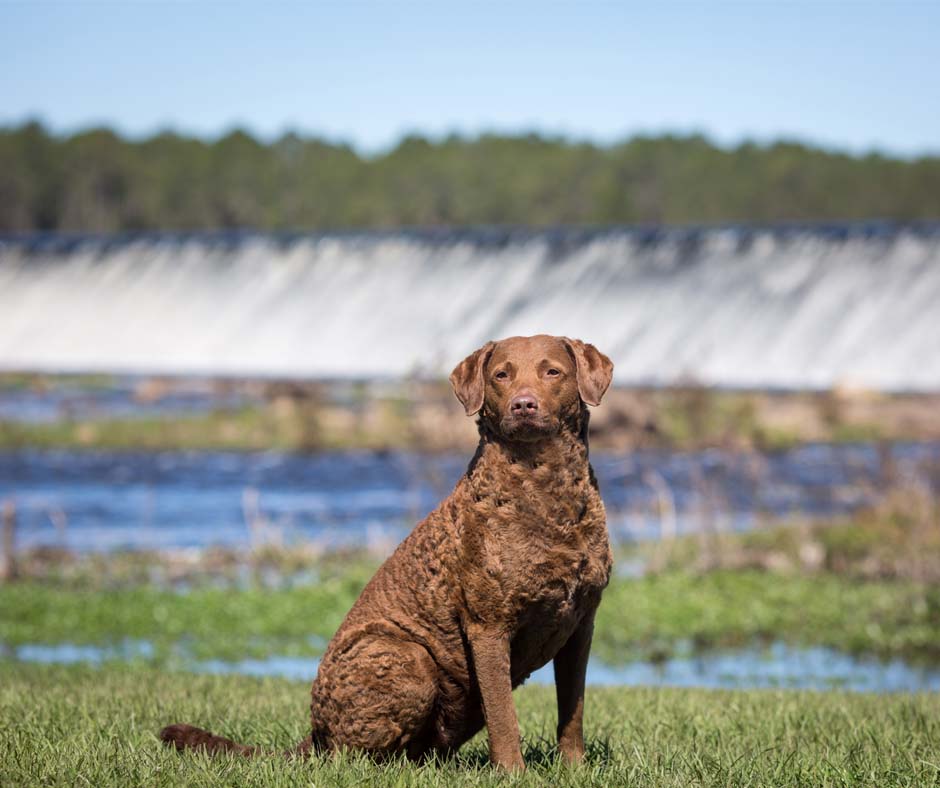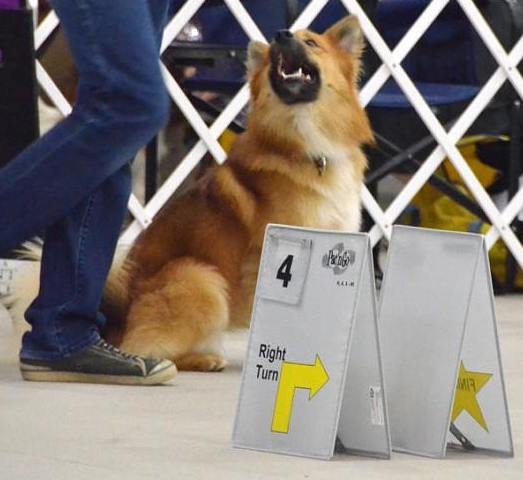514 – Chesapeake Bay Retrievers: An American Success Story
Chesapeake Bay Retrievers: An American Success Story
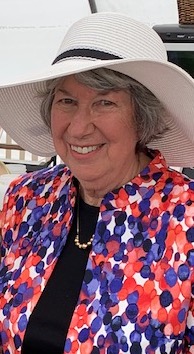 Betsy Horn Humer has spent a lifetime with Chesapeake Bay Retrievers. Her parents acquired their first dog in 1947 and Betsy has been deeply involved in the breed since childhood. A conformation and obedience/rally judge, Betsy brings tremendous depth and width of experience to her understanding of the sport.
Betsy Horn Humer has spent a lifetime with Chesapeake Bay Retrievers. Her parents acquired their first dog in 1947 and Betsy has been deeply involved in the breed since childhood. A conformation and obedience/rally judge, Betsy brings tremendous depth and width of experience to her understanding of the sport.
“They’re very different from the other retrievers,” Betsy said. “They’re not like Goldens and Labs who love everybody and wanna be your friend. They’re much more reserved. They’re much more like some of the working breeds — German Shepherds and Dobermans, Rottweilers.
“They have a real work ethic and they’re serious. They’re much more serious than your average Golden and Labrador. They’re not the dog for everyone, especially a first dog.
 “They’re very protective and that’s really because of their heritage and why they were originally developed.
“They’re very protective and that’s really because of their heritage and why they were originally developed.
“They were originally developed on Chesapeake Bay, of course. The story is that there was a shipwreck. There were a couple of dogs on the ship and they swam to the shores. One was named Sailor and one was named Canton. They were not Chesapeakes but they were more like the Saint John’s dog. The Labrador also goes back to that particular breed.
“They were bred with a couple of the other local hunting dogs and some of the background includes setters and bloodhounds and other retrievers. It’s an interesting mix and it does explain why we do have different types of coats and different kinds of hound markings because of the genetics that’s actually behind the breed.

2021 National Specialty show- Award of Merit. GCHB Eastern Waters’ Pink Power O’MesaRidge, BN RI. Owners/ Breeders – Betsy Horn Humer & Rupert J. Humer
“The breed was really developed and records were kept by the wealthy land owners who owned property on the Chesapeake Bay and had huge hunting clubs. It was the local marketers, the duck hunters and the water fowlers that used them for hunting back in the late 1800s.
“There were no limits on how many ducks you could take and these hunters would take several hundred a day. The Chesapeake would just go out in the Bay and retrieve them all, that was his job. When he wasn’t actually swimming and retrieving, his job was to guard the pile of ducks so that nobody else would take them. These ducks were sold to expensive restaurants in Baltimore. They were considered a real treat.
“Winters were much colder then. There was ice to be broken. The Chesapeake Bay is huge. I mean you’re not talking just like a little lake it is huge. You get tremendous amounts of tides, wind. It can be a very unpleasant place during hunting season. But these hunters, that was how they made their living and that was what they did.
“(Chesapeakes) are very strong. They’re much stronger than they look. They’ve got very strong bone. Their coat was developed in order to keep them warm. They have what’s referred to as a double coat. There’s a very soft undercoat and it’s interesting because it’s all one hair. The tops of the hair are very coarse and wiry but as you get closer to the skin, the coat is actually very soft and the outside harshness keeps the inside, the other part of it, dry.”
Be sure to listen in to this wide ranging conversation for more insights on the Chesapeake, judging in the show ring and the obedience ring, dog breeding and more.
403 – Virtual Reality: Step by Step to a Rally Title for Your Dog
Virtual Reality: Step by Step to a Rally Title for Your Dog
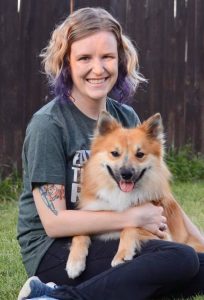 Trainer Gabi Vannini from What A Great Dog! walks us through the process to earn a virtual rally title for your dog. Below is a short excerpt from our conversation. Listen in to the podcast for excellent training tips, rally performance do’s and don’ts and more.
Trainer Gabi Vannini from What A Great Dog! walks us through the process to earn a virtual rally title for your dog. Below is a short excerpt from our conversation. Listen in to the podcast for excellent training tips, rally performance do’s and don’ts and more.
“You can submit videos for your rally novice title,” Vannini said. “So the entry level rally, you can submit three videos and get an actual rally title. It’s the same as if you went to a trial. You would have to get three qualifying legs. They’re having judges actually score these runs and look at them, so it’s not just a pass/fail. You’re actually getting your score out of 100 on that and having to do it just like you would in a trial. They’ve got five different courses that you can pick from to try out. They’ve set courses for you and you can do it in your backyard or your local park. If you have a local training building that you can rent the ring out, I know that’s what a lot of people have been doing, but you can get creative with it. Wherever you can fit a reasonably sized rally course and either set up a tripod or get someone to video for you and submit to AKC and get your actual rally novice title.
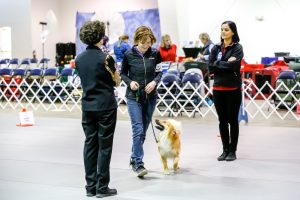 “(AKC has) been really helpful with … the rally maps. (They) have a specific spot on the map, ‘place camera here’ so that they can get the best view for the judges to be able to look at it. They’ve got the maps laid out for you. All five maps that you can pull up and use. They’ve got a really simple way to submit everything. They got their instructions and all of that right there. They’ve got a nice little how to perform the rally sign setup for you, so it’s really making it very accessible for people who are wanting to try something different with their dog.
“(AKC has) been really helpful with … the rally maps. (They) have a specific spot on the map, ‘place camera here’ so that they can get the best view for the judges to be able to look at it. They’ve got the maps laid out for you. All five maps that you can pull up and use. They’ve got a really simple way to submit everything. They got their instructions and all of that right there. They’ve got a nice little how to perform the rally sign setup for you, so it’s really making it very accessible for people who are wanting to try something different with their dog.
“I think this is going to be a really good opportunity. For people that know rally and do rally, you can fly through these if you want to. But I think it’s a really nice thing for people that maybe have done some of those trick titles or CGC … and now they have something a little more that they can learn about and do at home. By the time we get rolling back in dog shows, maybe they’ll want to jump up and go into rally intermediate, where it’s similar signs and are still on leash and see how things go.
“You always are gonna get the people that are gonna say that it’s gonna cheapen their rally title that they got. All things change. I got an Open title with my dog and no where does it say on my title certificate that he did the long stay in a group. Just because somebody can go do a virtual rally, it doesn’t mean yours is less. Those people aren’t competing with you. If you’re real serious about your rally and you want to get like 100 points on everything, wait for a dog show. The people who are being brought in by this rally virtual program, they’re not your competition. You don’t need to look at them as some kind of threat.”

